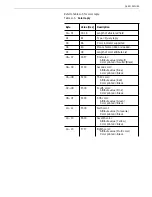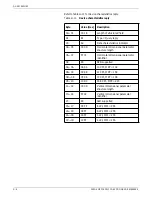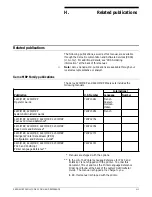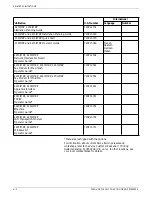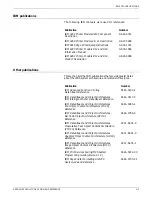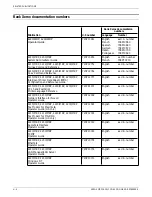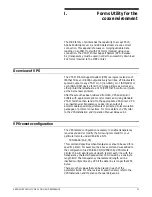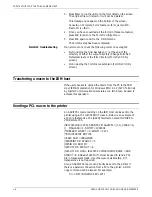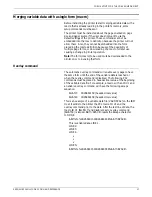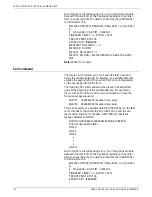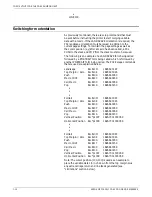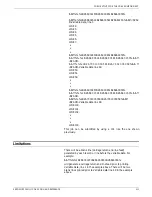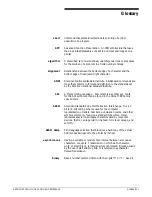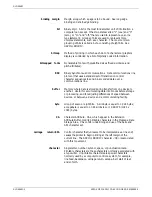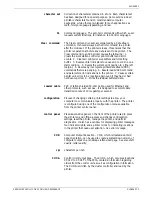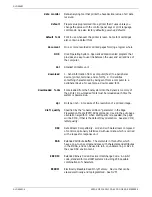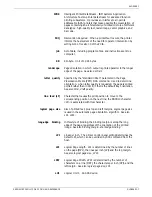
FORMS UTILITY FOR THE COAX ENVIRONMENT
3. Press Enter to run the utility on the form listed on the screen.
The original file will remain; it will not be deleted.
This message will appear on the bottom of the screen:
Conversion Complete; Form Name is <form_name>.FIX.
Macro ID is <ID#>.
4. Once you have converted all the forms in this same manner,
press End to return to the FormFix Utility Menu.
5. Press End again to exit to the DOS prompt.
The FormFix step has been completed.
FormFixC troubleshooting
If an error occurs, check the following common oversights:
•
Not including the final backslash ( \ ) at the end of the
directory of either the output directory (Change FormFixC
Defaults screen) or the form directory (FormFixC Utility
screen).
•
Not including the Form Name extension (FormFixC Utility
screen).
Transferring a macro to the IBM host
If the user chooses to upload the macro from the PC to the IBM
Host, IRMA Workstation for Windows EMU 2.1.2 (3270 Terminal)
by Digital Communications Associates, Inc. (DCA) can be used to
achieve this operation.
Sending a PCL macro to the printer
An ASCII PCL macro residing on the IBM Host can be sent to the
printer using a JCL with SYSOUT class A. Below is an example of
a JCL file that sends a PCL (ASCII) file/macro named INVOICE to
VPS Remote 156.
//JK12345 JOB (XXXX),'SENDPCL',MSGLEVEL = (1,1),CLASS = A,
//
MSGLASS = X,NOTIFY = JK34334
/*JOBPARM LINECT = 0, ROOM = 3231
/*ROUTE PRINT RMT156
// EXEC PGM = IEBGENER
//SYSPRINT DD SYSOUT = X
//SYSIN DD DUMMY
//SYSUT2 DD SYSOUT = A
//SYSUT1 DD DSN = JK12345.PCLFILE.INVOICE,DISP = SHR
SYSOUT=A instead of SYSOUT=J must be used to send a PCL
file in transparent mode. Use other sysout classes (B,C,J) if
transparency is not required.
Also, an ASCII PCL macro can directly be sent to the printer if
there is a parallel connection from a PC to the printer. A DOS
copy command can be issued. For example:
C:\>COPY /B INVOICE.PCL LPT1
I-6
XEROX MRP FAMILY COAX COMMAND REFERENCE


